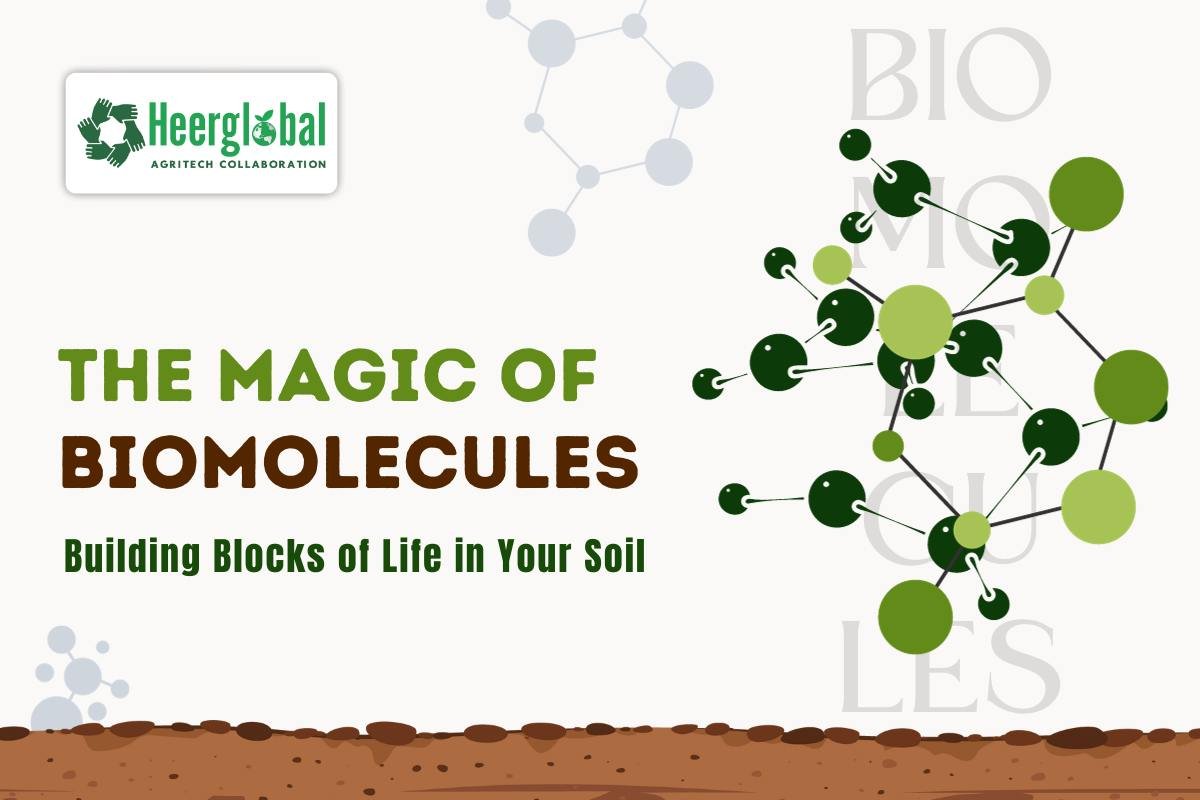Magic of Biomolecules: Building Blocks of Life in Your Soil
In the intricate dance of soil science, there’s a hidden marvel playing a crucial role – Biomolecules. These tiny powerhouses are the unsung heroes beneath your feet, shaping the health of your soil and, in turn, the success of your crops. Let’s dive into the world of Biomolecules, understanding what they are, how they work, and why they matter in agriculture.
Biomolecules: The Building Blocks of Life
Biomolecules are the molecular machines that make life tick. Think of them as the Lego bricks of living organisms. They’re the proteins, carbohydrates, lipids, and nucleic acids that orchestrate the biological symphony beneath the soil’s surface.
Types of Biomolecules:
Proteins:
-
- Definition: Proteins are the workhorses of life, performing various tasks like transporting nutrients and aiding in plant growth.
- Structure: Imagine a string of beads where each bead is an amino acid. These chains fold into complex shapes, determining the protein’s function.
- Properties: Proteins are like the handymen of the soil, assisting in nutrient uptake, disease resistance, and overall plant development.
Carbohydrates:
-
- Definition: Carbohydrates are the energy vaults, providing fuel for plant activities.
- Structure: Picture a chain of sugar molecules. The more complex the chain, the slower the energy release.
- Properties: Carbohydrates are the energy boosters, ensuring your plants have the stamina to grow and produce.
Lipids:
-
- Definition: Lipids are the protective shields, insulating and safeguarding plant cells.
- Structure: Think of them as the bricks in a protective wall, creating cell membranes and storing energy.
- Properties: Lipids play a role in water retention, protecting plants from dehydration and environmental stress.
Nucleic Acids:
-
- Definition: Nucleic acids are the information carriers, containing the genetic code for plant growth.
- Structure: Visualize a twisted ladder (the famous DNA double helix). This ladder holds the instructions for plant characteristics.
- Properties: Nucleic acids guide plant development, ensuring the next generation inherits the right traits.
Applications in Agriculture:
Enhancing Soil Fertility:
-
- Proteins, derived from organic matter, promote microbial activity in the soil. This microbial magic boosts nutrient availability for your crops.
Improving Plant Health:
-
- Carbohydrates act as plant defenders, strengthening cell walls and promoting disease resistance. A well-nourished plant is a healthy plant.
Boosting Crop Yields:
-
- Lipids contribute to efficient energy storage, ensuring your plants have the endurance to produce abundant yields.
Ensuring Genetic Diversity:
-
- Nucleic acids safeguard the genetic information that defines your crops. Healthy nucleic acids mean diverse and resilient plant populations.
Farm-Friendly Tips:
Organic Matter Matters:
-
- Incorporate organic matter into your soil. It’s a biomolecule buffet that nourishes the soil and supports your crops.
Balanced Nutrition:
-
- Ensure your plants get a balanced diet. Proteins, carbohydrates, lipids, and nucleic acids should dance together in harmony.
Protect Your Soil Ecosystem:
-
- Understand that healthy biomolecules mean a thriving soil ecosystem. Avoid overusing chemical inputs that disrupt this delicate balance.
Conclusion:
Biomolecules are the unsung heroes of your soil, working tirelessly to create a fertile environment for your crops. Understanding these molecular wonders empowers you to make informed decisions, nurturing not just your plants but the very essence of life beneath your feet. So, here’s to the tiny superheroes in your soil, shaping the future of your farm, one molecule at a time.




